When we talk about Hibiscus, we usually talk about the whole flower from the petals to the stem , while the word Karkadè means the single flower with the outer petals (which enclose the pistils).
This part of the petals is the most precious, fleshy and beneficial part, which gives us its properties and an intense perfume. An herbal tea of karkadè, derived from the edible flowers of Hibiscus, contains many antioxidant substances, minerals and vitamins beneficial for our body.
Karkadè - Hibiscus: properties and benefits
The red color of this infusion derives from the substances contained in hibiscus flowers, ie polysaccharides and flavonoids . In addition to coloring, these components give health benefits, especially in the form of herbal tea.
Mainly, these substances are beneficial for the cardiovascular system, having the ability to prevent the phenomenon of oxidation of low density lipoproteins (LDL). These are proteins whose degeneration is associated with heart disease (atherosclerotic vascular disease.). A mechanism that can be counteracted by anthocyanins and flavonoids present in hibiscus: sabdaretin, gossypetine and hibiscetin.
In addition, an infusion of hibiscus gives diuretic benefits , and helps with its purgative action, intestinal transit against constipation. In addition, the detoxifying effect is excellent for the liver.
The diuretic activity also supports the well-being of the urinary tract, counteracting the activity of some bacteria. In fact, in folk medicine, hibiscus has been used as a natural anti-inflammatory for urinary tract disorders and irritations, such as cystitis.
The activity of increased diuresis is useful for the drainage of excess fluids, counteracting water retention, which makes us swollen and increases the risk of edema and cellulite.
Increasing diuresis also counteracts hypertension, i.e. high blood pressure, and by joining flavonoids, helps regulate blood cholesterol levels, especially for those suffering from conditions such as metabolic syndrome and diabetes.
Constant high blood pressure, we know, gives the heart extra strain, and can cause it to weaken.
Hibiscus tea is packed with powerful antioxidants, molecules that help fight compounds called free radicals, which cause cell damage and promote aging. Flavonoid antioxidants combine with vitamin C to help skin well-being and counteract the signs of aging .
These hibiscus antioxidants also benefit hair beauty . In the past, hibiscus flower packs were used against hair loss and the premature appearance of gray hair.
In addition, vitamin C strengthens the immune system.
Recently, the beneficial effect of the infusion of hibiscus flowers on some symptoms such as hot flashes in menopause has been studied.
For women's health, hibiscus contains essential antioxidants to avoid annoying hormonal imbalances such as hot flashes. Over the centuries, in fact, the infusion of hibiscus flowers was used to relieve menstrual cramps, thus reducing some symptoms of menstruation.
Origins and History of cultivation
The hibiscus is identified with the Hibiscus plant, native to tropical Asian areas and the islands of the Pacific Ocean. From that territory, it spread and was cultivated, for ornamental purposes, in Europe and North America - for its beautiful flowers.
Today, there are over 300 different species of hibiscus.
His name derives from the Greek word hibiskos, which means mallow, and was attributed to him by the Roman physician Dioscorides, in the 1st century BC. Interest in this plant was renewed in more recent times, when several specimens of Hibiscus were sent to Holland from the court of Constantinople, deriving from Asia Minor. The botanist and ambassador Ghiselin de Busbecq (16th century), renewed the cultivation of hibiscus in Europe.
In several countries this plant has achieved enormous success; especially in the Polynesian and Pacific islands, and in Jamaica, where Hibiscus elatus is the national tree. Rapprealso feel the national flower of Haiti, South Korea and Malaysia (with different hibiscus varieties Hibiscus syriacus and Hibiscus Rosa-Sinensis).
Even in the Solomon Islands (New Guinea), fibers and leaves are obtained from the hibiscus taliaceus to create the typical dance skirts.
The hibiscus flowers used on the island of Tahiti, to adorn the hair of girls, immortalized in the works of the painter Gauguin, are famous. The boys, on the other hand, use the flower on their right ear to show that they are busy, or on the left ear to say that they are free. Hibiscus in the language of flowers symbolizes beauty and affection.
In the Hindu religion it is also used for divine interpretations.
In folk medicine it was used for an infusion, which in African areas is called karkadè tea. It was used against fever, colds, constipation, to treat nervous and heart diseases, and for liver purification. The most widespread use was as a diuretic, and as a beneficial medicine during menopause.
Plant and flowers
The Hibiscus plant belongs to the mallow family (Malvaceae). Native to warm temperate and tropical regions, it is cultivated both for ornamental purposes for flowers and as a fiber plant.
The hibiscus that grows in areas where the climate is mild, and never reaches relevant dimensions. Plants that grow in their native habitats can reach heights of up to 25 meters.
Hibiscus flowers appear singly or in clusters, lasting only one day in many species.
Among the main species is the Hibiscus rosa-sinensis or Chinese rose, which can reach a height of 4.5 meters. It is grown for its large red, white, yellow or orange flowers.
The East African hibiscus (H. schizopetalus), is a drooping shrub with red petals, usually grown indoors.
Other Hibiscus plants include mahoe (H. tiliaceus), kenaf (H. cannabinus), and rose (Hibiscus sabdariffa) fiber plants; in addition to the Rose of Sharon (H. syriacus), and many flowering plants commonly known as mallow.
The variety used in the kitchen is that of Hibiscus sabdariffa from which the karkadé is obtained for infusions and jams, as well as for drying - dehydrated hibiscus flowers. The fruits of Hibiscus esculentus are used as a vegetable (Okra, Okra or Bamja).
The Hibiscus cannabinus variety is used in the paper industry, as it is rich in cellulose.
Nutritional values of Hibiscus flowers
The hibiscus flower is rich in antioxidants, polyphenols, and provides various nutrients. Hibiscus donates minerals such as magnesium, calcium, iron and potassium.
In terms of vitamins, hibiscus contains decent amounts of vitamin A and vitamin C , with levels higher than in orange and mango.
Some antioxidant components of hibiscus are anthocyanins (delphinidin, cyanidin, etc.), then bio-active substances such as ibiscetin, sabdaretin, gossypetin, quercetin. There are tannins, protocatechuic acid, polysaccharides, acids such as tartaric, malic, oxalic, citric, etc.
How to use the ingredients in Hibiscus tea
The ideal infusion is achieved by placing approximately 3-5 grams of hibiscus flowers in a cup (250 ml) with water at 100 ° C.
Leave to infuse for 8 to 10 minutes, before drinking the herbal tea.
Hibiscus: side effects and contraindications
In some conditions, it is advisable to moderate the consumption of hibiscus flowers to a minimum, or to avoid it - it is good to discuss with your doctor before consuming it. For pregnant women, it is It is possible that hibiscus relaxes the uterine muscles, inducing premature labor. Even in breastfeeding women, it should be taken with caution.
If you use blood pressure medications, hibiscus can be effective in affecting blood pressure. On the modalities, consult a specialist, as there may be interactions between the high amounts of hibiscus and diuretic drugs used to treat high blood pressure.











 No reward points for this product.
No reward points for this product.

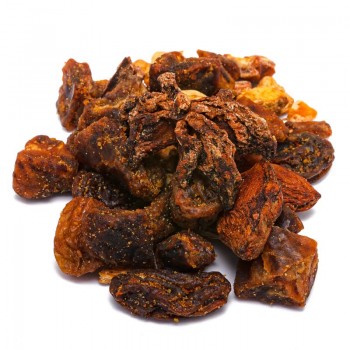

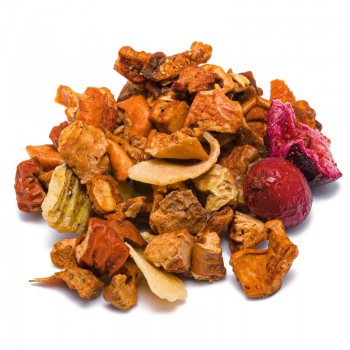
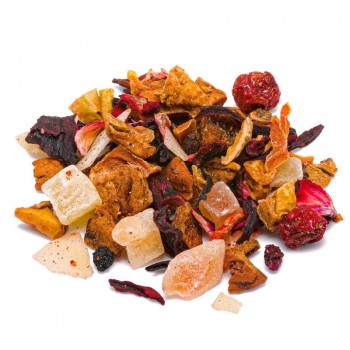
![infuso pesca e vaniglia [Natura d'Oriente]](https://www.naturadoriente.com/3538-home_default/infused-peach-vanilla.jpg)
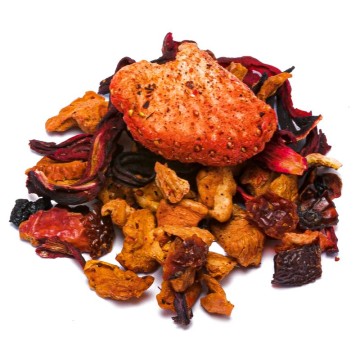




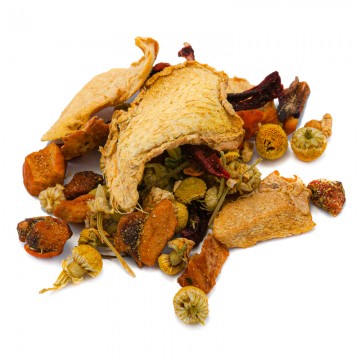
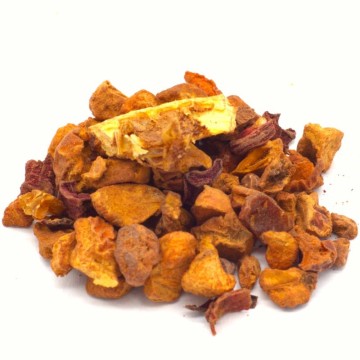

![infuso pesca melone [Natura d'Oriente]](https://www.naturadoriente.com/3535-home_default/infused-peach-melon.jpg)
